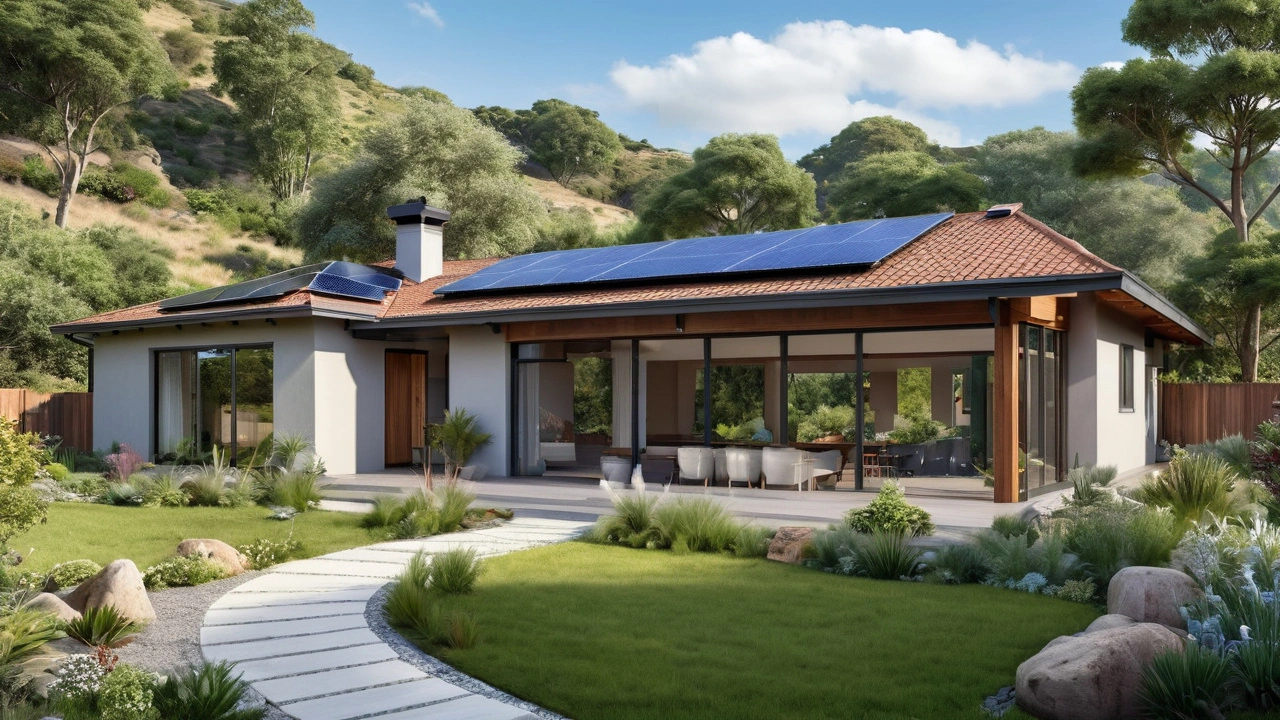Ranch-style homes are gaining popularity as the ideal choice for sustainable living. These single-story homes offer an array of benefits, including energy efficiency and the close connection to nature. Their design makes them perfect for solar panel installation and rainwater harvesting. This article explores the features that make ranch-style homes an eco-friendly option, with tips on optimizing your home for sustainability.
Eco-Friendly Houses: Smart Choices That Cut Energy, Bills, and Carbon
Homes cause roughly 20% of global CO2 from energy use — but you can change that. Whether you’re building new or fixing up an old place, small choices add up fast. This page gives clear, practical steps you can use today to make a house greener, cheaper to run, and more comfortable.
Start by thinking like an engineer: control heat flow, control air leaks, and choose efficient systems. Good insulation, tight seals, and smart windows matter more than fancy finishes. And don’t forget ventilation—fresh air without waste is the secret to a healthy, efficient home.
Design and build: what really moves the needle
Orientation: face main living rooms south (in northern hemispheres) to catch winter sun and shade them in summer. Thermal mass—like a concrete floor or stone wall—stores daytime heat and releases it at night. Prioritize a compact shape: less exterior surface means less heat loss.
Windows and doors: choose double- or triple-glazed windows with low-emissivity coatings. Place windows where they bring light but not unwanted heat in summer; use overhangs, awnings, or simple exterior blinds to block high sun. Air-tight construction plus mechanical ventilation with heat recovery (MVHR) keeps air fresh while reclaiming up to 90% of heat from outgoing air.
Heating and cooling: swap old furnaces and boilers for electric heat pumps. They are more efficient and lower carbon, especially if paired with solar panels. Consider a small, zoned system so you’re not heating empty rooms.
Cost-smart retrofits and easy wins
Want practical steps that hit the budget and give fast results? Follow this order: 1) seal gaps and drafts (doors, attic, service penetrations), 2) add insulation in the attic and walls where possible, 3) upgrade to LED lighting and smart thermostats, 4) install efficient water fixtures and a heat-pump water heater, 5) then consider window upgrades and solar PV.
Rainwater harvesting and low-flow fixtures cut water use and lower bills. Green roofs add insulation and slow storm runoff, while reflective roof coatings reduce summer cooling needs. For structural upgrades, look at SIPs (structural insulated panels) or insulated concrete formwork if you’re rebuilding—both boost airtightness and speed construction.
Certifications like Passivhaus, LEED, or Net Zero aren’t required, but they give clear performance targets. If certification feels like overkill, use their standards as a checklist: airtightness targets, heating load limits, and MVHR performance.
Ready for a quick checklist? Seal air leaks, boost attic insulation, add MVHR or improve ventilation, switch to a heat pump, fit LED lights, and add solar if you can. Small steps first, bigger projects later. That’s the easiest, most affordable path to a truly eco-friendly house.

